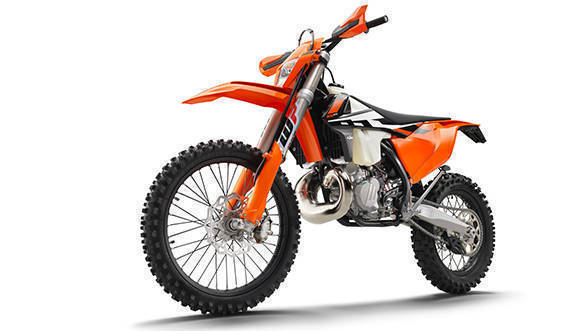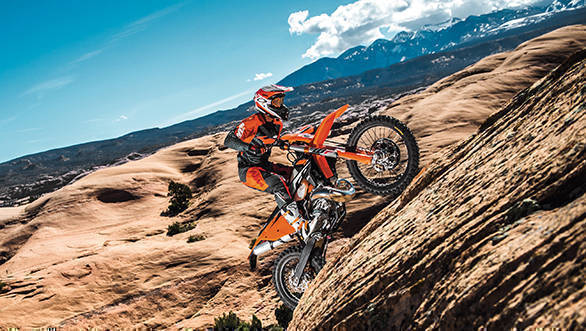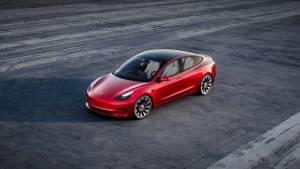KTM to launch fuel-injected two-stroke engines on May 15, 2017
KTM has revealed that its 250 EXC and 300 EXC enduro motorcycles will feature fuel injection for 2018's model line-up. What makes this special is that these motorcycles are powered by two-stroke engines, and this is a big news because the new motorcycles will be the first serial production two-stroke motorcycles to feature fuel injection.
KTM is very well-known for its performance motorcycles, especially its enduro and off-road motorcycles. It is one of the few manufacturers which chose to stick to two-stroke engines in professional dirt bike racing, and also on a few street bikes. By using FI on its performance motorcycles, KTM will possibly breathe new life into the dying two-stroke powered generation.
KTM calls its two-stroke technology, Transfer Port Injection (TPI). This technology would eliminate the need for pre-mixed fuel and lubricant, thereby eliminating jetting in the carburetor. The technology was developed in-house at KTM's R&D facility in Mattighofen, Austria.

Two-stroke engine powered motorcycles have been for long heralded for being fun to ride, and this is due to their rev-happy nature. When tuned right, two-stroke engines are capable of revving almost twice as quick as their four-stroke counterparts and also capable of producing nearly twice as much power compared to a four-stroke engine with similar engine displacement.
This is because, in a two-stroke engine, two power strokes would occur in the span of two revolutions of the crankshaft, whereas in a four-stroke engine there would be just one. Two-stroke engines are also cheaper to produce due to their simple construction, involving just three main moving parts in the combustion cycle the piston, connecting-rod and crankshaft. A four-stroke, on the other hand, would additionally require a timing chain, a camshaft and valves.
The biggest problem with a two-stroke engine, though, is the pollution it produces, and this is exactly what killed them. Manufacturers were finding it difficult to cope with stringent emissions regulations, and slowly shifted to four-stroke engines. KTM too shifted to four-stroke engines on most of its road-going motorcycles, but continued to use two-stroke engines on their race motorcycles and street bikes in some markets.

So, will we get a two-stroke powered Duke or RC sometime in the future? Though most enthusiasts would love that, but the answer is no. In the Indian market, the last performance two-stroke motorcycles produced were the Yamaha RX-135 series. TVS though continued to use two-stroke engines on the XL heavy-duty moped, and from June 2016, they even shifted to a four-stroke engine.
It is highly unlikely that KTM would bring the two-stroke technology to its road-going motorcycles in India, given the amount of money they have invested in their R&D for four-strokes. Adding to this is the stricter emissions norms being enforced, with BS IV setting to kick in from April 01, 2017 and then a direct jump to BS VI next year. However, what remains to be seen is how much of a difference the TPI technology would make on these competition motorcycles' emissions. Depending on this, KTM would probably decide whether it is worthy enough to initiate R&D for two-stroke on its road-going motorcycles in India.
Starts Rs 1,02,700
149cc
5-Speed
12.40
13.60
-NA-











